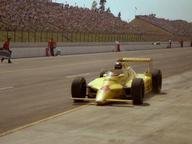Quiz Answer Key and Fun Facts
1. During the 1989 season the biggest rivalry in the history of Formula 1 would descend into a bitter feud. According to Prost it all started when Senna broke his word by ignoring an agreement not to overtake each other in the first lap of a certain Grand Prix. In which race did this happen?
2. With three victories in the first four races Senna had an excellent start to the 1989 season. What happened in the next four races?
3. Before the 1989 Portuguese Grand Prix Senna was well behind Prost in the points standing, and he desperately needed a victory. Unfortunately, this didn't happen because of a collision with Nigel Mansell. However, the collision could easily have been avoided. Why is this?
4. Who was the president of FISA (governing board for motor racing events) in 1989?
5. In 1989 not all points scored by a driver counted towards the total championship tally. Only the 11 highest points scores counted. If a driver exceeded 11 scores the lowest scores would be deducted.
6. In the 1989 Japanese Grand Prix the Prost-Senna rivalry came to a climax when both gentlemen collided on lap 47. What was the eventual outcome of the incident?
7. What was the verdict of the FIA International Court of Appeal concerning the incidents at the 1989 Japanese Grand Prix?
8. The uproar about the Japanese controversy hadn't died down yet when the F1 circus went to Australia. There was even talk McLaren would challenge FISA before a civil court. In order to keep Senna's (slim) chances for the world championship alive he had to win the 1989 Australian Grand Prix. Did he win?
9. In 1990 Prost had left McLaren for Ferrari. It looked like the outcome of the 1990 world championship would again be decided in the Japanese Grand Prix. Now the tables were turned as Senna was leading the championship. Everything seemed to go well for Senna when he took pole position. Still, Senna was furious. Why was that?
10. How did the Japanese Grand Prix decide the outcome of the 1990 world championship?
Source: Author
AlonsoKing
This quiz was reviewed by FunTrivia editor
gtho4 before going online.
Any errors found in FunTrivia content are routinely corrected through our feedback system.
